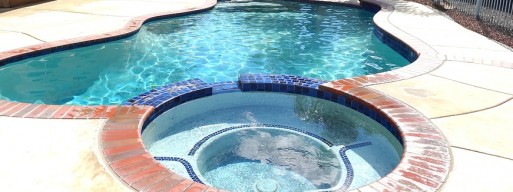Helpful Terms In Hot Tub Maintenance
If you’re thinking of getting a hot tub in Ottawa, it’s important to know the basic information to maintain a clean, well-working hot tub. Ottawa hot tub experts can also teach you everything you need to know about hot tub care. Below are a few common terms and definitions to help you get acquainted with hot tub care and maintenance:
Algae—microscopic plants that grow in water. Common hot tub algae include:
- Blue-green algae—black and resistant to cholrine.
- Green algae—the most common type, which leaves a hot tub feeling slimy.
- Mustard algae—yellow, powdery, and very resistant to chlorine treatment.
Algaecides—chemicals that kill algae. Polyquat algaecides usually treat all types of algae. In the case of highly resistant algae—like mustard algae—chelated copper or algaecides containing bromine will help.
Bacteria—microscopic organisms. There are two types of harmful bacteria that are found in poorly-sanitized hot tubs:
- Pseudomonas aeruginosa—which causes a skin infection known as “hot tub rash.”
- Legionella—which can cause Legionnaires’ disease.
Balanced Water—has a balanced ratio of pH (acidity and alkalinity). Unbalanced water can lead to corrosive, cloudy water, damage to the hot tub, and bather discomfort.
Bromine (Br)—a chemical element used as a substitute for chlorine to sanitize hot tub water.
Calcium Hardness (CH)—the amount of calcium dissolved in water. The ideal CH range for hot tubs is 175 – 275 ppm (parts per million).
Chlorine (Cl)—the most common chemical used to sanitize hot tubs.
Chloramines—irritants caused by a combination of free chlorine—the amount that kills algae and bacteria (preferred range: 1.0 – 3.0 ppm)—and nitrogenous compounds—cosmetics, perspiration, sun screen, oil, etc.
Chlorine Demand—the amount of chlorine needed for free chlorine to be maintained.
Chlorine Residual—the amount of chlorine left to kill new bacteria after chlorine demand is reached.
Combined Chlorine—a chlorine-ammonia compound that is a poor sanitizer, and can cause chlorine odor and eye irritation.
Cyanuric Acid (CYA)—prevents sunlight from dissipating chlorine residuals in hot tub water.
Oxidize—a chemical reaction resulting in cleaner water. Chemical contaminants are broken up by oxidizing agents, producing a gas that disappears.
pH—the measurement of water’s acidity and alkalinity, with an ideal sanitation range of 7.4 – 7.6.
Reagent—powder, liquids, or tablets used to test water.
Scale—rough calcium build-up on the floors, walls, and plumbing of hot tubs.
Saturation Index—determined by the levels of total alkalinity, calcium hardness, pH, and temperature. These levels cause a hot tub’s water to either form scales, be neutral, or corrosive.
Shock Treatment—oxidizes the water to remove contaminants.
Super Chlorination—when enough chlorine is added to achieve a free chlorine residual of 10 ppm.
Total Alkalinity (TA)—a measurement of alkalinity. Maintaining a TA range of 125 – 150 ppm prevents extreme pH fluctuations in water.
Undesirable Compounds—are brought into the water by people and the environment, and interfere with hot tub water conditions.


